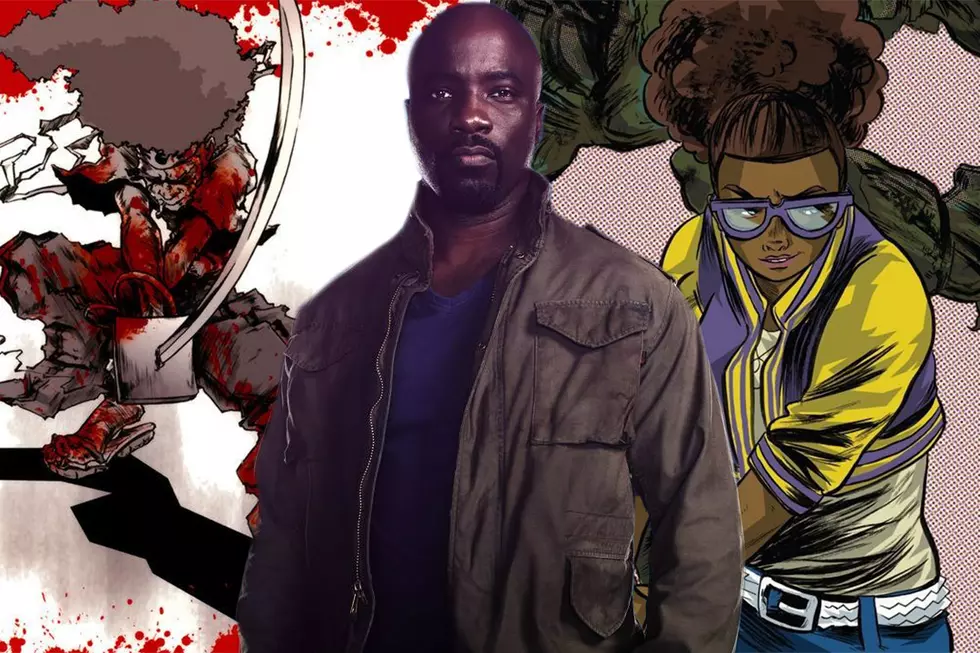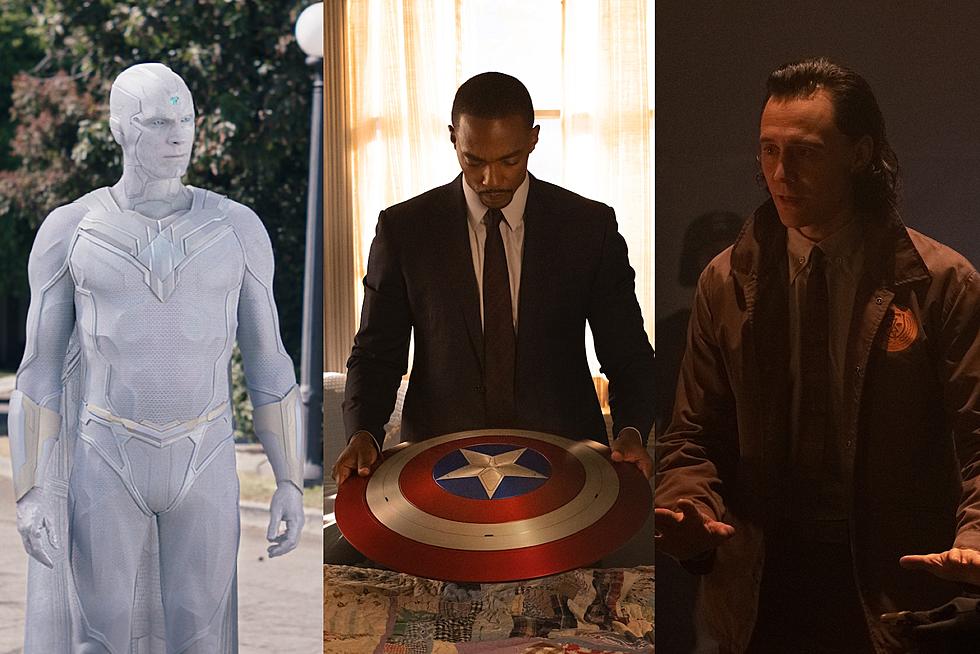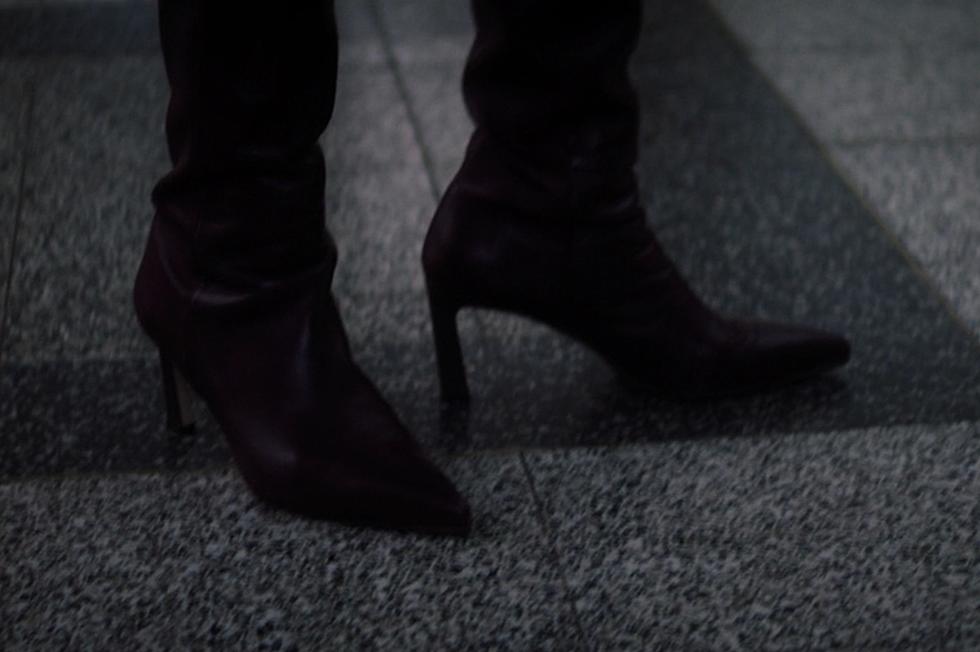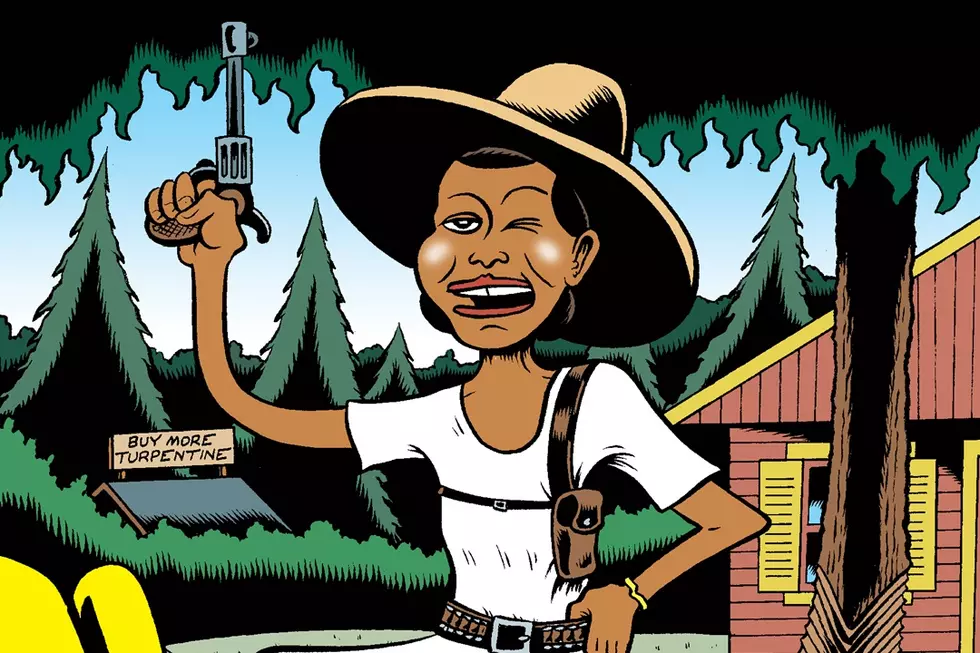
Buy This Book: ‘Nova Phase’ #1
On the list of things I'm a complete and total sucker for, outer-space westerns are up at the top of the list, right under comics about Batman punching a gorilla or crocodile. I love those things, and the more obvious the connection to westerns, the more I tend to love it. Cowboy Bebop? Great. Firefly, with its train robberies and galactic civil war veterans? Yes. Heck, I've even got a passing interest in BraveStarr, and that thing is so on the nose that it takes place on "Planet Texas." Seriously, you put cosmic six-shooters and I'm basically in, no questions asked.
Of course, it helps if the end product is actually good, too, and while it was the premise and a quick look at the art that got my interest piqued in the first place, Matthew Ritter and Adam Elbatimy's Nova Phase is every bit as good as I wanted it to be.
Obviously, the major selling point is Elbatimy's retro-styled 8-bit pixel art. It's right there at the front of everything they've done -- the website for the series is "8-BitSpaceWestern," there's a variant cover designed to look like an old NES box (complete with text describing it as a roleplaying adventure and Final Fantasy-esque "screenshots" of scenes in the book on the back cover), there's even a chiptune soundtrack that goes along with the book, set to be released as the story comes out. They're pushing it so prominently that I'd almost call it a gimmick -- which, frankly, is exactly what it is -- but it's done so well that I'd hesitate to use that word. "Gimmick" implies that it's just a flashy add-on without any substance to it, but that' not what Elbatimy's doing here. What he's doing is making a beautiful book.
What it really comes down to is the storytelling. Elbatimy's art is designed to evoke the feeling of classic video game cutscenes, but it all fits together better than those actually did. In a lot of ways, and bear with me through this metaphor, it reminds me of those 25th anniversary GI Joe action figures that came out back in 2007. They were more detailed, more durable, better produced, but built to evoke the feeling of the original toys. In other words, they were the way we remembered the originals, not the way they were. The art in Nova Phase is the same way -- it reminds you of how it felt to look at those scenes and the feeling of adventure you got sitting down to play for a weekend.
Also, you don't have to spend five minutes blowing the dust out of an issue of Nova Phase before you read it, so that's a pretty clear advantage right there.
That's not to say that Elbatimy isn't staying faithful to the gimmick. For most of the first issue, he relies on these classic 8-bit style limited color palettes, moving from the cold blues and purples of space to the harsh red and green of a nightclub to the reds and oranges of an apartment at sunset. It's only in the scenes outside -- most of which come in the second issue, once we've had some time to get used to the style -- that Elbatimy allows himself the use of a wider variety of colors. Even then, it's the sort of vivid, bright environment that you'd expect to see Mega Man running through on his way to prevent a robot apocalypse.
Really, though, that's all window dressing. What matters is how well it works sequentially, and there's a motion and expressiveness to the characters here that immediately hooked me into the story. Everything is staged perfectly, and even with the limited detail required to really sell the 8-bit art style, Elbatimy packs his pages with emotion. When the main character, Veronica, longs to get into space, it all comes together, colors, staging, just the right amount of detail, and creates an emotion with an impact that's pretty hard to overstate.
The only thing that's a little dodgy is the white-on-black word balloons, a color combination that tends to be a little harder to read than the more familiar black-on-white (unless, you know, you're Todd Klein and you're lettering Dream's dialogue in Sandman). Again, that's designed to evoke old-school Nintendo, and it's more than legible enough that readers probably won't notice.
As for the story, Veronica Darkwater (and believe me, it would have to be a fantastic comic to make up for that name, which it is and does) is a young woman involved in that most Space Western of professions: Bounty Hunting. And, in true space adventure hero-with-a-thousand-faces Skywalkerian style, she dreams of using the money she gets from bringing down crooks to pay for a trip off-world and a life of spacefaring adventure, far from her past. Unfortunately, a string of bad luck has meant that her bounties cost her almost as much as she makes, and she remains trapped. Until, that is, she gets mixed up in a complicated, far-flung plot that sends her off of the planet and out into a space adventure with the fate of the galaxy etc, etc, etc.
It's all really familiar stuff. It hits the same beats that you've seen in other stories, and it's not shy about it. The thing is, it all goes together in a way that really works. It might be using well-worn elements, but the story we're seeing here still manages to be fresh.
It all feels like it's part of the same idea that led to the book being presented in 8-bit pixels, designed to evoke a classic video game. It's that same theme of taking familiar concepts and putting them together, of recapturing feelings from your childhood and presenting them to you in a new way. That's not to say that everything in Nova Phase is a riff on something else, but that it's presented in a way that echoes the feeling of those other stories rather than feeling like a pale retread. I genuinely loved reading this comic now at 31, but if I'd read it when I was 10, it would be my absolute favorite thing in the world.
The reason it works is, quite simply, that it's just good comics, with art and story reinforcing each other in order to make it seem new and exciting. It's all built around the same thing, a collaboration that supports itself in how well it blends together. I almost wish it wasn't presented with the pixel art so prominent as a selling point, because touting it as a retro-video-game comic really detracts from what it actually is, but that would take away one of the reasons it works so well. Still, it's more than that -- it's a great comic where everything fits, and those are hard to find.
Nova Phase is out this month on Comixology from Slave Labor Graphics.
More From ComicsAlliance








![The Boys Are Back in Town With Marvel Legends’ New Guardians of the Galaxy Figures [Review]](http://townsquare.media/site/622/files/2017/03/IMG_2839.jpg?w=980&q=75)
